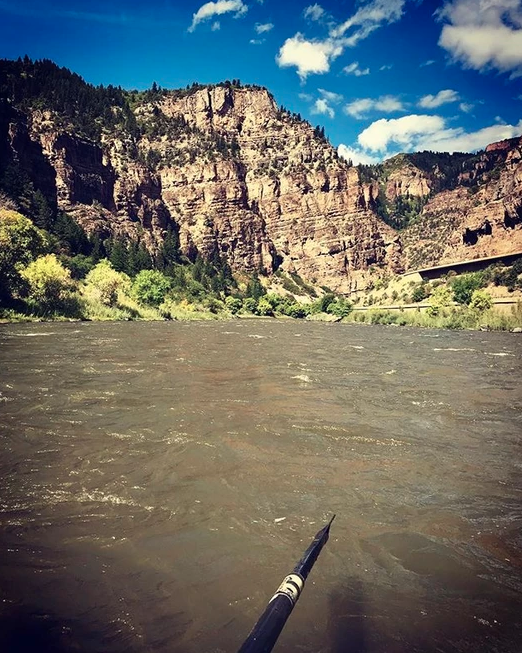It’s no secret that Colorado has received A LOT of snow this year. According to the NRCS, the current average snowpack for the Arkansas, Colorado and South Platte River basin is 138%. This means that the snow water equivalent (SWE) is 38% greater than the 29-year median. Considering this, we can start making predictions for spring fishing conditions and provide you with tips and tricks to have a successful spring on the river.
Before we dive into the tips and tricks, let’s discuss the impact that heavy snowpack has on our rivers. As temperatures rise throughout the spring, the snowpack will begin to melt and create runoff. In general, Colorado experiences peak runoff from the middle of May through most of June. With that said, a warm spring could encourage an early and more gradual runoff period before peak runoff hits mid-May. This runoff will feed directly into the headwaters and feeder creeks that ultimately form the major rivers in Colorado. As runoff increases, three key characteristics of the river will change that affect trout holding and feeding behaviors. The most obvious impact is an increase in river flow. As the river flows increase, trout will transition and hold in different sections of the river for protection. The second factor to consider is water clarity. Due to the increase in flow, sediment, algae and debris will kick loose, causing the water clarity to decline. The final factor to consider is food. As flows increase and the rocks, sediment and algae dislodge, the bugs attached to the bottom of the river will release and increase the food supply in the river. Considering those three factors, here are the tips and tricks that you can use while fishing this spring.

- Keep a close eye on flows: By observing the fluctuations in flow, you will have a better idea where the trout hold and feed. When a spike occurs, trout will move towards the slow and protected sections of the river to conserve energy and protect themselves from debris. In general, the best sections to target are deep, slow pools, banks and areas near structure.
- Observe the water clarity: During the winter, the water clarity is generally crystal clear. This makes pattern and color selection much more critical. Conversely, when the clarity is poor, trout tend to be less concerned about the finer details and more likely to eat what they can see. Understanding that, fly patterns that contrast the water or contain flash will help get the trout’s attention and encourage a strike. Red, white, black, purple and flashy flies will be the most productive.
- Increase your fly size: During the spring, a select number of hatches occur but as flows increase, the bugs that aren’t scheduled to hatch for several months will dislodge and become trout food. This means that stonefly, caddis and larger baetis patterns will become increasingly more productive. We aren’t saying you should rule out small midge and BWO patterns, but you should consider using large patterns as lead flies.
- Increase tippet size: 6x and 7x tippet can be necessary to fool selective trout during low flows and gin clear water. However, as the clarity decreases and the flows ramp up, fine tippet becomes less important. Depending on the river you fish, 4x – 5x tippet will be sufficient.
- Add on some weight: Higher flows translate to faster currents. So, in order to get your flies down quickly, you will need ample weight on your line. Tungsten bead head nymphs will help but if you aren’t fishing heavy flies, splitshot or putty will help you get your flies down to the slower water columns.
